Prime Minister Manmohan Singh’s recent visit to Japan could not have come at a more appropriate time. Though it was scheduled to take place last December, the summit had to be postponed due to sudden announcement of elections to the Japanese Parliament. Thus, the Indian Prime Minister got an opportunity to talk to his newly elected counterpart, Shinzo Abe, who was the chief architect of India-Japan relations when he was Prime Minister for about a year in 2006-07.
Undoubtedly, the credit goes to the Japanese leader for conceptualising the idea of ‘Indo-Pacific’ that has become among both policymakers and analysts the new geostrategic template to denote growing interface between the Indian and Pacific Oceans and, importantly, the rising stature of India as a great power of consequence.
In his highly appreciated address to the joint session of the Indian Parliament during his last India visit, Abe had talked eloquently of the emergence of ‘confluence of two seas’ and the need for India and Japan to join hands to address a number of issues at the global, East Asian regional and bilateral level.
In an article to the Project Syndicate soon after his election as Prime Minister, Abe passionately advocated the need for open and democratic countries to forge close links. In that short article, he devoted more space to India than any other country. He wrote, “I envisage a strategy whereby Australia, India, Japan, and the US state of Hawaii form a diamond to safeguard the maritime commons stretching from the Indian Ocean region to the western Pacific. I am prepared to invest, to the greatest possible extent, Japan’s capabilities in this security diamond.” Further, he stated, “Of the two countries, India – a resident power in East Asia, with the Andaman and Nicobar Islands sitting at the western end of the Strait of Malacca (through which some 40% of world trade passes) – deserves greater emphasis. Japan is now engaged in regular bilateral service-to-service military dialogues with India, and has embarked on official trilateral talks that include the US. And India’s government has shown its political savvy by forging an agreement to provide Japan with rare earth minerals – a vital component in many manufacturing processes – after China chose to use its supplies of rare earths as a diplomatic stick.”
The visit gains considerable significance because of the backdrop in which it took place: the recent standoff with China over its incursions across the line of control in Ladakh, Beijing’s growing stridence on its claims over the Senkaku islets in East China Sea currently under Japanese control and its inflexibility and use of force over sovereignty of islands in the South China Sea. The visit provided an appropriate strategic setting for India and Japan to chart a new course in their relationship, which appeared to be losing steam not because the Japanese had lost interest in India but because of India’s own indecision and a lack of robust response. China is the elephant in the room and invariably would figure in the discussions, but there is a host of other issues of common interest and concern that deserve a lot more attention.
Fortunately for India, the drift that Japan has witnessed in its domestic politics in the last few years with six prime ministers in five years appears to be over with Shinzo Abe successfully staging an unprecedented come back at the helm of affairs with a clear mandate. Unlike in his previous stint, Abe is far more resolute and confident and is willing to take bold steps on both economic and diplomatic fronts. He has unleashed his own brand of an economic revival programme, some call it Abenomics, which is risky but seems to be working. And this should be good news for India. There are three specific areas that figured prominently one way or another during the Singh’s interactions with his counterpart.
Firstly, India has been the largest recipient of Japanese aid for the last several years but in terms of investments, though steadily growing, they have not come up to expectations. Compared to more than US$ 100 bn. that Japan has invested in China, it is hardly 14 bn. in India till 2012, which constituted less than 4 percent of Japan’s total outbound investments. The fruits of the Comprehensive Economic Partnership Agreement (CEPA) between India and Japan that became operational in August 2011 are yet to be seen. The bilateral trade at $18 bn. last year was about 1/20th of Japan’s trade with China.
To be sure, it is not that Japanese are not interested but it is a fact that India is a far more difficult place to do business with woefully poor infrastructure, an enduring licence Raj system and other associated evils such as red tape and corruption. The much touted mega project, Delhi Mumbai Industrial Corridor, signed in 2006 is yet to take off and similarly the progress on dedicated rail freight corridors that Japan has committed to fund connecting Delhi with Mumbai and Kolkata is excruciatingly tardy. More fundamentally, India is still an outlier when it comes to extensive East Asian production networks where Japanese are deeply involved and unless it integrates with that region, India will remain unattractive to Japanese investors. Hence, there is an urgent need to strengthen this weak link in order to make the strategic partnership truly comprehensive.
Secondly, a quick agreement on civilian nuclear cooperation (talks stalled consequent to the March 2011 Fukushima accident) is critical for two reasons. First and foremost, Japan has the most advanced technology in this sector and the other, except Russian, most major global reactor building companies have close links with Japanese companies: Toshiba owns American Westinghouse, Hitachi and Mitsubishi have close technical tie ups with General Electric (U.S.) and Areva (French) respectively. Further, Toshiba alone has more than 30 percent of global reactor building capacity. Hence, India cannot hope to forge any meaningful cooperation in this direction without an agreement with Japan.
Despite continued scepticism and complete closure of all nuclear reactors in Japan, Abe has been actively promoting Japanese reactors. Besides Vietnam, he recently signed agreements with United Arab Emirates and Turkey. India is a huge market Japan cannot afford to miss, lest Russians and even South Koreans may corner it. Yet, a deal is not easy to arrive at in the present environment in Japan although the two Prime Ministers have agreed to expedite the negotiations. Some progress can be expected after the crucial elections to the Japanese Upper House in July.
Thirdly, with an eye on China, intensified security cooperation is another key area that has figured quite prominently in the discussions. Effectively the India-Japan ‘strategic partnership’ began to take off only in 2009, though the progress since then has been stupendous. There are currently some eight bilateral institutional mechanisms including annual Prime Ministerial meetings, Two-Plus-Two Talks, and military-to-military talks. The low key coast guard exercises have been upgraded to the navy-level in view of the rapidly changing maritime security environment in the Indo-Pacific region where both have high stakes, which now is becoming the global centre of gravity. There are a number of opportunities for them to work together in addressing innumerable non-traditional security challenges as also in Myanmar and other countries of Southeast Asia.
What is noteworthy is that New Delhi could not have asked for a more favourable line up of top Japanese political leadership: Prime Minister Abe, Deputy Prime Minister Taro Aso, Secretary General of the ruling Liberal Democratic Party, Shigeru Ishiba, and several other cabinet ministers are known Indophiles. Time is most opportune to take full advantage of this.
While it is true that for more than two decades the Japanese economy has been mired in virtual stagnation buffeted by deflation and mounting debt, it would be foolhardy to undermine its strengths: Japan is sitting on a mountain of more than $18 trillion of private savings, is a major supplier of investible capital and it continues to a leader in several advanced technologies. Tokyo has also been loosening its self-imposed restrictions on export of arms and dual-use technologies. It means a huge opportunity for India to work with Japan in certain niche areas. The bottom line is that Japan has been instrumental in transforming East Asia with its generous investments and technology transfer and the same thing can happen with India too provided India gets its act together and plays its cards well.
Published Date: 31st> May 2013

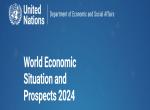
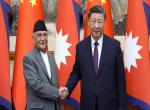

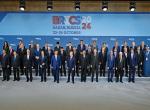

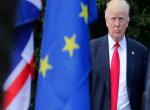
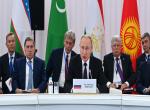
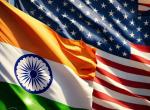
Post new comment